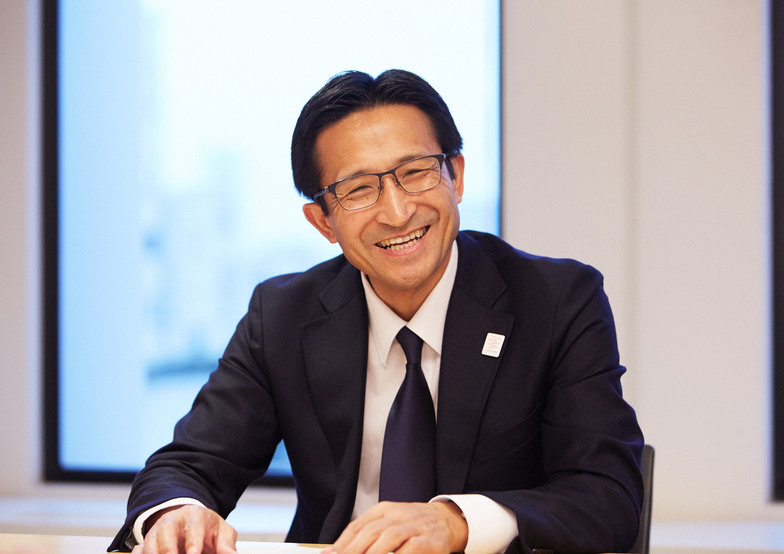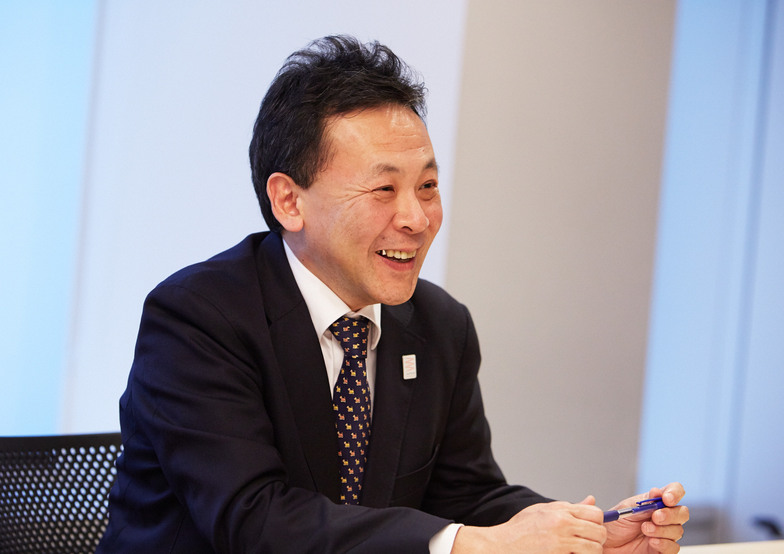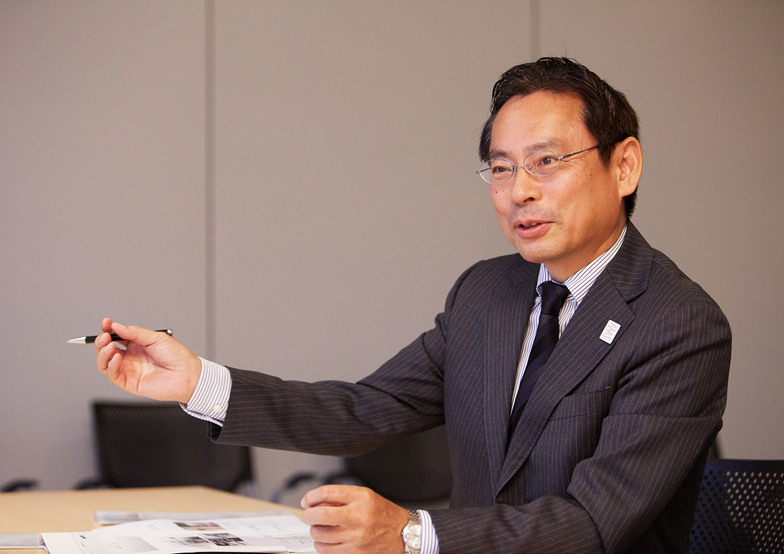The Milan International Exposition (Expo Milano) ran from May 1st to October 31st.
The Japan Pavilion, comprehensively produced by Dentsu Inc., won the Gold Award in the "Exhibition Design" category. Reflecting on this highly successful expo, which closed its doors after welcoming 21.5 million visitors, a discussion was held with Mr. Tatsuya Kato, representative of the Japanese government; Mr. Yuki Ando, who managed the Japan Pavilion's six-month operation; Mr. Jun Naito, Exhibition Producer at Dentsu Inc.; and Mr. Takayuki Yano, Chief Director.
Interview and Composition: Aki Kanahara, Dentsu Inc. Event & Space Design Bureau
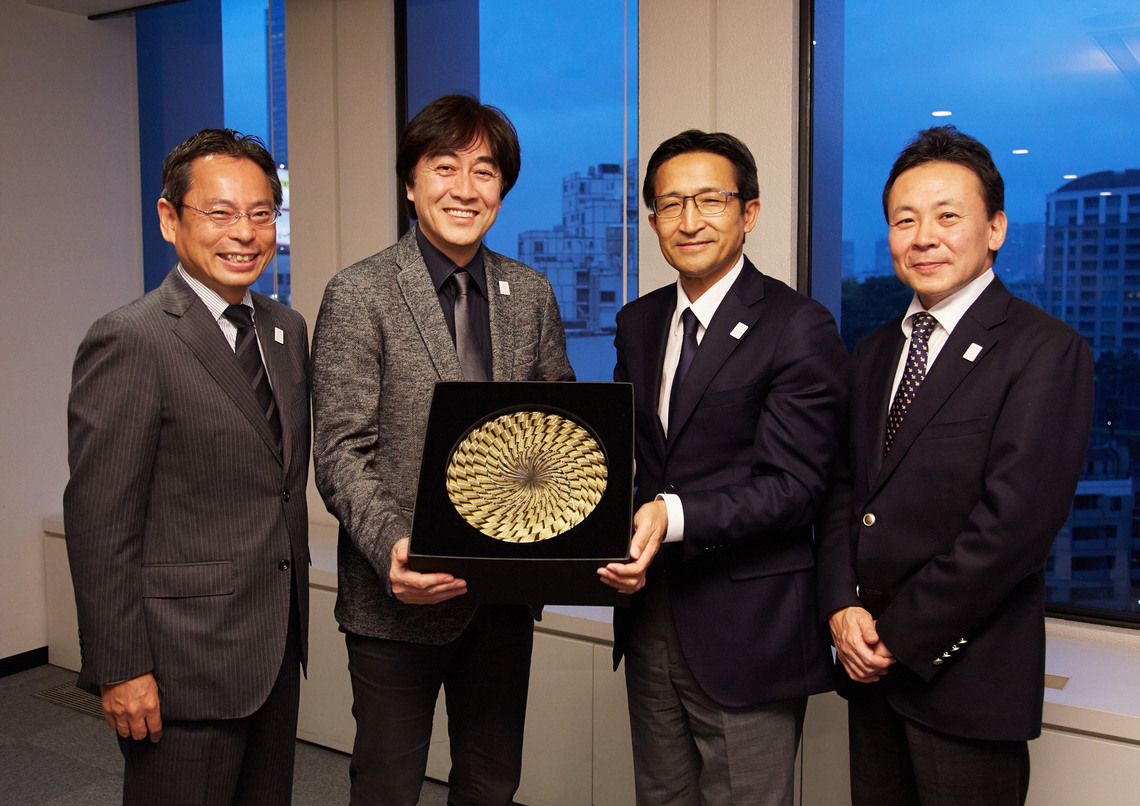
(From left) Mr. Yano, Mr. Naito, Mr. Kato, Mr. Ando
Japan Pavilion wins Gold Prize in the "Exhibition Design Category"!
Yano: The Japan Pavilion received the Gold Prize in the "Exhibition Design Category" at the Pavilion Prize (*) hosted by the Bureau International des Expositions (BIE)! The Expo has a prize system of Gold, Silver, and Bronze Prizes, said to be the origin of the Olympic gold, silver, and bronze medals. In Olympic terms, it's like "winning the gold medal and being the world's best." What aspects did the BIE particularly evaluate?
Kato: In the award ceremony comments, the "harmony" between nature and technology was cited as a key point of evaluation. The jury included experts from various fields, and this award is meant to encourage the future development of expositions and inspire future participants. So, it's really a commendation for everyone involved. That part makes me genuinely happy.
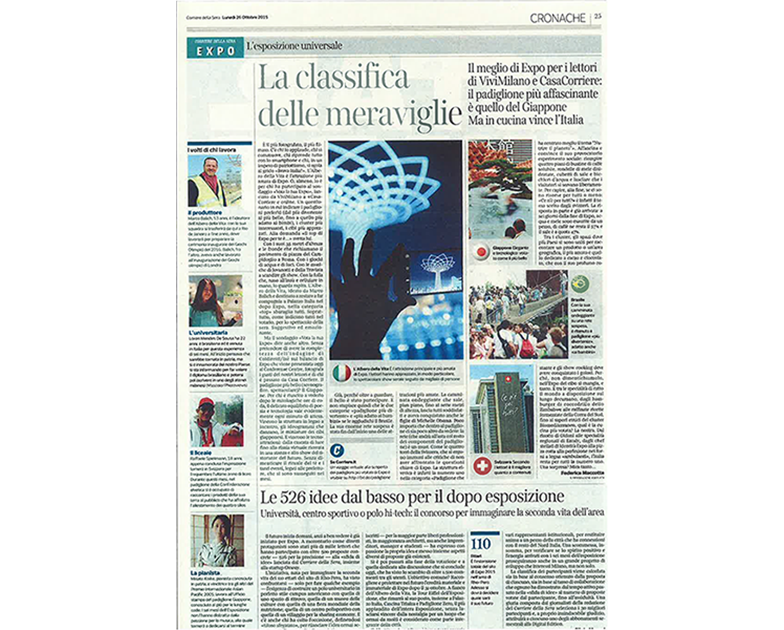
October 26th, Italian newspaper Corriere della Sera: "A perfect balance of poetry and technology"
Naito: From the start, we were all cheering each other on, saying "Let's win the gold together! Let's do this as All Japan!" just like the recent All Japan Rugby team at the London World Cup. So this is incredibly gratifying. When it comes to being evaluated by experts, the usual approach has been to focus on a single theme, stripping down the exhibition to show only the essentials. This time, with so many themes and content, I thought it might be quite challenging. But looking back now, I think that might actually have been a good thing.

For instance, the theater utilized the latest system technology. The images on each table were high-definition, the large wall screens displayed various content, and the actors performed diverse acts. Initially, there were concerns that it might be overwhelming—that people wouldn't know where to look or if we'd packed too much in. In that sense, it was very challenging. Surprisingly, though, the audience didn't need to understand everything; they intuitively grasped what to focus on. They recognized beauty for beauty's sake and responded enthusiastically to the actors' dramatic cues. The attendants' communication methods were also superb. It was a theater where the entire audience became one, making it a challenge well worth undertaking.
Ando: Regarding the theater, survey comments included "interactive" and "the creators are brilliant." Later in the event, we saw more people filming videos—probably repeat visitors.
Yano: When repeat visitors keep coming back, it probably stems from a feeling that they might have missed something. The "INNOVATION" exhibit also showed both video and a globe, so I think the rich content itself likely contributed to the increase in repeat visitors.
Kato: The "LEGACY" exhibit also received quite high praise, didn't it?
Yano: There was a lot of coverage about "LEGACY" in Japan too.
Kato: "LEGACY" primarily used traditional exhibition methods, right? I was surprised by how many people were really into that aspect. The survey responses were positive too.
Naito: Food toys definitely have that charm of Japanese craftsmanship, right? Sushi is cute, rice balls are cute, and of course, sweets are cute. I really wanted to use small models to make things look cute, but once I actually started making them, the sheer number was overwhelming (laughs).
Kato: But the cost-effectiveness is probably the best part. People were actually opening the drawers and taking their time to look inside, weren't they?
Ando: The foreign guests we attended to really appreciated how meticulous the Japanese are.
Yano: Many people also spent a lot of time looking at the pressed flowers in the corridor, taking photos of each one individually. There was a scent presentation there too, and some people were just sniffing the pressed flowers the whole time (laughs). I thought each guest was enjoying it in their own way.
Ando: After it ended, some people even asked if they could have the pressed flowers.
Yano: How do you think the Japanese-style ink paintings and kanji in the prologue came across to foreign visitors?
Ando: Foreign guests said the eight side panels depicting the life cycle of rain were exceptionally beautiful. They serve to draw viewers into the imagery, signaling the start of a journey through Japan's rich food culture. I felt it was best to leave them to each viewer's own sensibilities, without needing explanation.
Kato: That approach of entrusting it to the viewer actually works positively for the next developments. I think trusting the creators' sensibilities was the right call.
Naito: I believe it's sufficient if something painterly, like Japanese calligraphy, appears suddenly and the audience themselves feel something from it.
The Expo is a place to embody Japan's national brand.
Yano: For those in Japan who couldn't make it to Milan, and regarding future international expositions, please share your thoughts.
Kato: In my experience, I can't recall another event in Europe—be it a local government, sponsor company, or various stakeholder group—that drew as many people from Japan as this Expo did. I want to believe that real-world exhibitions like Expos still hold the power to attract people. Since Expos will continue to be held around the world, I sincerely hope many people will go see them.
Yano: So the more digitalization advances, the more important real-life experiences become, right?
Kato: "HARMONY" and the theater are prime examples of that, aren't they? Watching them on YouTube, you can get a sense of "how beautiful," but the atmosphere you feel when you're physically in the Expo space is something you can't truly experience unless you're there. Showcasing Japan to over 20 million people through the Expo is, as a national initiative, incredibly valuable.
Naito: Given the common perception that Italians are food connoisseurs with considerable culinary knowledge, and that Milanese in particular are well-versed in art and culture, I think many people in Japan still find it astonishing or puzzling that 20 million Milanese visited the Expo and that the Japan Pavilion was so popular.
Ando: That's right. It was an epoch-making Expo that brought the concept of world's fairs back into the spotlight. For the next Expo, we want to create an outstanding Japan Pavilion exhibition that allows visitors from around the world to directly experience Japan's power of communication.
Kato: I was reminded that the Expo is a place that embodies Japan's national brand power in every sense. Japan is interesting, it draws attention, makes you want to visit – it's exactly the kind of thing that relates to inbound tourism. I think we were able to contribute at least a little to raising Japan's value, and that's how the appeal at the Expo should be.
Also, this time, I felt the presence of Asian countries at the Expo, not just Japan, has significantly increased. The Expo is originally a European cultural event, right? But not only Japan, but also Korea, China, Thailand, and others worked hard, further stirring interest in Asia. Since the Expo is funded by national resources, it naturally has policy objectives. It must contribute to communicating Japan's national brand by clearly demonstrating initiatives and keywords that accurately address the challenges Japan currently faces. This time, I felt we achieved that sufficiently.
Yano: We intend to continue promoting the Japan brand globally. There's so much more to discuss, but truly, thank you for all your hard work. Reflecting on today with everyone, I finally feel the joy that everything has concluded safely.
*Pavilion Prize
An award system organized by the Bureau International des Expositions (BIE). At the Milan Expo, pavilions were divided into three categories based on size: self-built pavilions over 2,000 square meters, self-built pavilions under 2,000 square meters, and clusters. Within each category, three divisions—"Exhibition Design," "Architecture and Landscape," and "Theme"—were established, with gold, silver, and bronze prizes awarded to outstanding foreign pavilions. The Japan Pavilion, a self-built pavilion exceeding 2,000 square meters, received the Gold Prize. "Theme," and "Architecture and Landscape." Gold, Silver, and Bronze Prizes were awarded to outstanding foreign pavilions. The Japan Pavilion received the Gold Prize in the Exhibition Design category for self-built pavilions over 2,000 square meters.











